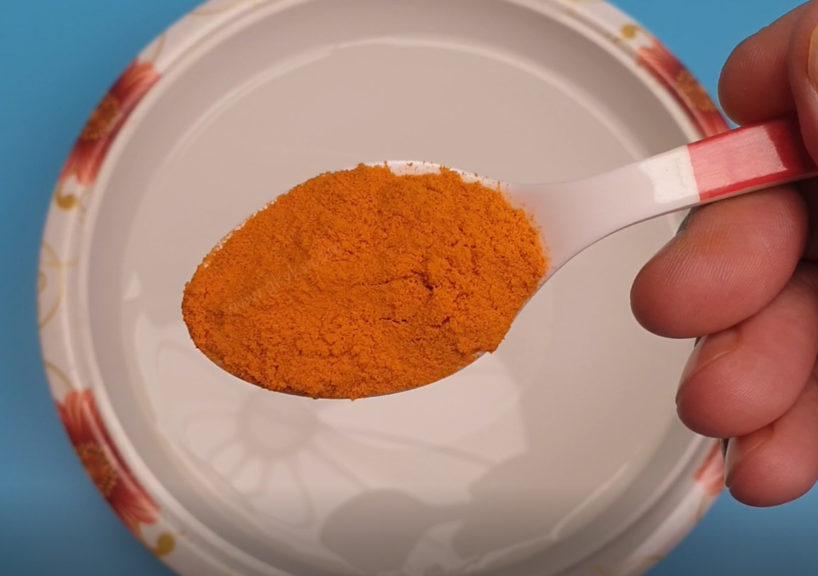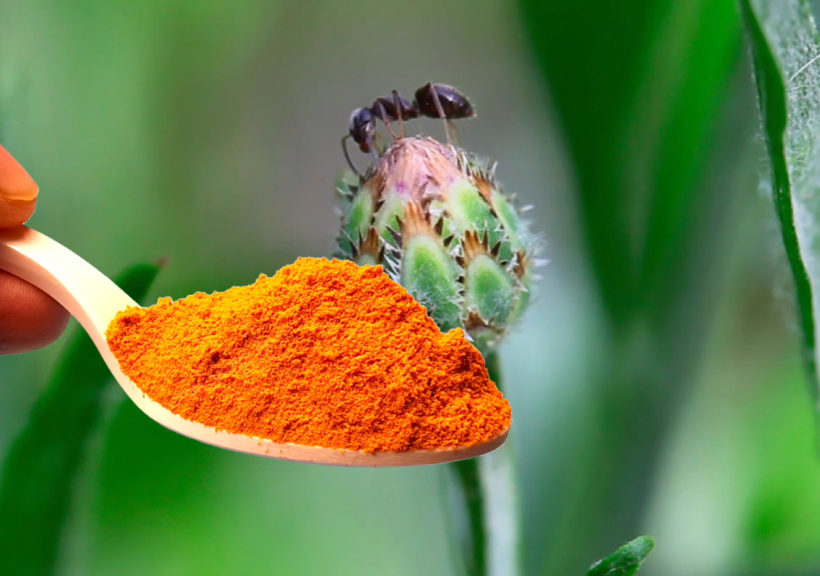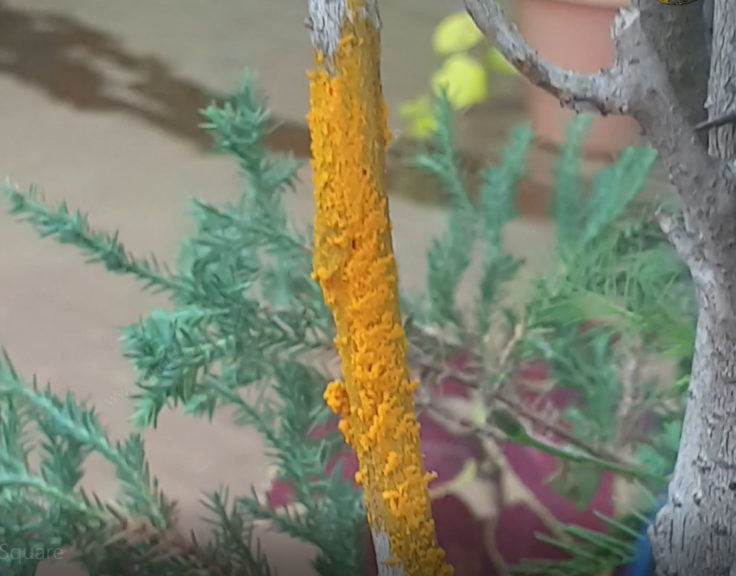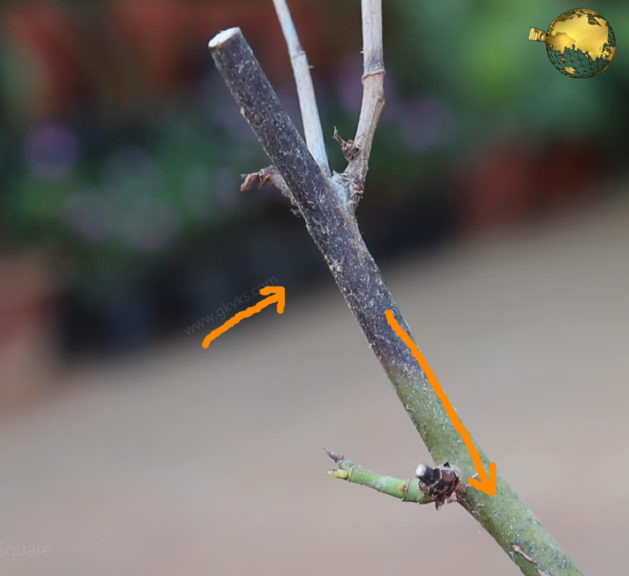First and foremost, please avoid the use of chemical pesticides and fertilizers which have a lot of hazardous effects on humans and animals. That’s the main reason, why we promote the use of natural agents in this gardening portal.

Turmeric rhizome contains a substance called Curcumin, which is a very potent antioxidant, has antimicrobial, anti-inflammatory, hepatoprotective effects, and it is very beneficial in boosting the immune system of our body. Turmeric is not only good for the human body but also has some amazing benefits in the garden. You can easily grow turmeric plant from a small piece of turmeric rhizome and harvest a lot of turmeric.
- ANT REPELLANT: Sometimes Ants, especially if there are lots of them, can be a menace to your garden. They seem to be particularly sensitive to turmeric’s strong odor.

- How to Use Turmeric to Get rid of Ants? Simply sprinkle turmeric powder around your plants and even over the surface of the soil. Just few pinches and not too much. This can repel ants and help you get rid of these unwanted visitors in your garden, which can sometimes pose a serious threat by carrying mealybugs to the growing ends of plants. Yes! Mealybugs and ants have a symbiotic relationship. Ants carry mealybugs to growing ends of plants in exchange for the honeydew excreted out of their anus. So, Ant control means mealybug control.
- SOIL PEST CONTROL: You can get rid of soil pests particularly fungal root rot and fungus gnats in the soil by mixing turmeric in soil. You can mix about 1 tablespoon per gallon of soil while making your potting mix or whenever you repot your plant. Remember, adding too much of it can have negative impact on the beneficial soil microbes. The other method to use for plants that cannot be repotted, is mixing 1 tablespoon of turmeric in 1 gallon of water or 1 teaspoon per liter of water and thoroughly water your affected plant with this solution. We will shortly discuss on how to make a powerful pesticide spray using turmeric. Please watch it till the end.
- HEALING TREE WOUNDS: Similar to humans, open wounds or injuries in plants, can make them susceptible to different kinds of diseases and infections, particularly fungal rot. Due to its natural antiseptic and antibacterial properties, turmeric is also a natural remedy to heal various types of plant wounds. You can make a turmeric paste and apply over the wound to save the plant. This also helps in plant stem or branch fractures. You apply the paste and tie a polythene or grafting tape to save the plant. This turmeric treatment is also commonly used after pruning tree branches to cut wounds, also used in grafting, and any other similar situations when the plant becomes exposed to external damaging factors.

- TO TREAT ROSE DIE BACK DISEASE: Rose dieback is a condition commonly affecting rose plants where there is browning or blackening of the tip of the rose stem or a branch which then travels down toward the graft and may engulf the whole plant causing death. It can either be a Branch die back or the main stem dieback towards the graft. It is in fact a commonly encountered problem by every gardener and can sometimes be too bad causing death of the plant if no intervention is done. Though, the main treatment of Dieback disease is pruning the involved stem or branch, applying turmeric paste over the wound after pruning helps prevent progression of Rose dieback disease.

- AS A ROOTING AGENT: Though not a rooting hormone, turmeric can be used to increase the chances of rooting plant cuttings. This is mainly because of its anti-microbial and anti-fungal effects.
- PESTICIDE SPRAY: Turmeric alone as a spray can be used to treat few fungal plant diseases and pests like powdery mildew and other fungal spots. But it is not effective against pests like mealybugs, aphids, mites and other pests. For minor fungal spots and powdery mildew, you can mix 2 tea spoons of turmeric powder in 1 litre of water and spray on the affected plant.
Though there is no substitute to neem oil for pest control, you can make a powerful and broad-spectrum pesticide using turmeric and other stuff, especially if neem oil is not available in your location. You need to mix other stuff depending on what you want to treat.
- For Powdery mildew, you can mix 2 teaspoon of Turmeric powder, 100 ml of milk and 2 teaspoons of distilled white vinegar to 1 litre of water and spray on the affected plant. This is the most powerful natural remedy to treat powdery mildew.
- If Neem Oil is not Working on Certain Pests: You can add Turmeric and Garlic to neem oil solution if the pests are resistant to neem oil. You mix 5 to 10 ml neem oil in 1 litre of water and add 1 – 2 teaspoons of turmeric powder or even fresh turmeric rhizome and then add 4 to 5 cloves of crushed garlic to this mixture and sieve it fine to avoid clogging of spray bottle. Spray this once weekly. Patch test on a leaf may be important, depending on the concentration of your neem oil brand.
About 7 Months back, we planted some pieces of grocery bought ginger and turmeric rhizomes. Let’s take a quick recap of that step by step process which is common for both ginger and turmeric.
- Choose your rhizomes – they must be free of wrinkles and with visible eyes.
- Cut into multiple pieces – each piece must have atleast 2 eyes.
- Soak in water for about 12 hours.
- Plant them in a well draining soil containing at least 50% compost like decomposed cowdung or vermicompost. You can use garden soil or coco coir or a mix of both.
- You can first plant in smaller containers or directly plant in larger containers of atleast 12 inch size.
- Plant them 1 to 2 inches deep with eyes facing upwards or sidewards. Best time to plant is spring or summer so that you can harvest in fall months.
- Water thoroughly and then keep in bright indirect sunlight until you get first set of leaves.
- Rooting and shooting should start within a week, you can keep in direct sunlight of atleast 4 to 6 hours.
- After a month, if you have grown in smaller containers, transplant each plant into a larger container of atleast 12 inches.
- Fertilize once a month With one or Two Handfuls Of Compost and water thoroughly twice a week or more depending on your climatic conditions.
Now Let’s look into harvesting:
Ginger and Turmeric can be harvested any time after 6 to 8 months or when you see the plant starts to dieback and leaves turning yellow and dry.
You need to stop watering a week before harvesting. Then just loosen the soil in the container by tapping it or if you have grown in a poly bag, you can loosen the soil by tapping and patting. That’s it. Remove the dirt and air dry the rhizomes before storing.
- TURMERIC IS A TROPICAL PLANT
- CHOOSE YOUR TURMERIC RHIZOMES – Must be Free of Wrinkles, With Visible Eyes,
- CUT INTO MULTIPLE PIECES – EACH PIECE MUST HAVE 2-3 EYES
- OPTIONALLY LEAVE THE PIECES IN AIR FOR HEALING FOR 2 DAYS.
- SOAK FOR 12 HOURS IN WATER
- SOIL PREPARATION: A Well Draining Soil with Atleast 50% compost like decomposed cowdung or vermicompost. Cocopeat + compost or Peatmoss + Compost
- CHOOSE ANY CONTAINER FOR ROOTING. YOU CAN CHOOSE A LARGE CONTAINER LIKE 12 TO 15 INCH CONTAINER OR FABRIC BAG AND PLANT DIRECTLY. MAKE SURE THERE ARE MULTIPLE DRAINAGE HOLES. FILL THE CONTAINER WITH POTTING MIX.
- PLANT TURMERIC PIECES WITH EYES FACING UPWARDS OR SIDEWAYS. ATLEAST 1 OR 2 INCHES DEEP. COVER THEM WITH POTTING MIX.
- WATER THOROUGHLY TILL IT COMES OUT OF DRAINAGE HOLES.
- KEEP IN INDIRECT BRIGHT LIGHT.
- KEEP THE SOIL MOIST BUT NOT SOGGY
- RESULTS: SHOOTS START IN 4-5 DAYS AND CONTINUE TO GROW.
- TRANSPLANT TO LARGER CONTAINERS. ONE OR TWO PLANTS PER LARGE CONTAINER
- FERTILIZE MONTHLY WITH TWO HANDFULS OF COMPOST AND KEEP IN A LOCATION WHICH RECEIVES ATLEAST 4 HOURS SUNLIGHT PREFERABLY EARLY MORNING SUN OR UNDER A GREEN SHADE NET FOR FULL DAY.
- HARVESTING TURMERIC: YOU CAN HARVEST AFTER 8 TO 9 MONTHS WHEN THE TURMERIC PLANTS BECOMES YELLOW AND DIES.
